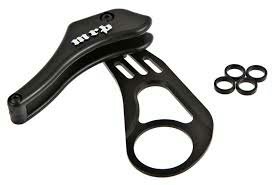One thing that I'm curious about in Bicycle808's informative post is the real world difference in a friction or index rear derailer. As far as I can figure, the derailer shouldn't care how the cable is pulled, it just moves as much as the shifter moves it whether that be by friction or indexing, it doesn't know the difference. I'm not disputing the statement, just curious what the actual difference would be between the two derailer types (if there is any besides marketing distinction).
The difference between various indexing derailers will be the leverage ratio, meaning how much cable is pulled and how that translates to how far in- or outboard the pulleys move. For a zillion years, shimano had a roughly 1.7:1 ratio for their indexed derailers and shifters, and folks typically refer to this as 2:1. But, it's not. Further, when they went to the Dyna-Sys 10 speed for mtbs, they changed the ratio to 1.2:1. But, weirdly enough, Shimano road 10 speed is still 1.7:1. TBH, i haven't a clue about the Shimano 11 speed ratios, but i think it's 1.2:1 for both road and mountain. One day, i'll get around to googling it.
So, BITD, Shimano set-ups basically worked where if the shifter matched the rear cluster, and the chain was narrow enough, any index-compat shimano rear derailer would work. Dyna-Sys ruined that. And, with different manufacturers, the ratios were ALL different, so you kinda needed to run the same brand shifter, rear derailer, and cluster... but all sorts of frankenstein techniques exist to get around that, like alt cable routing, "chips" at the cable anchor, products like j-tek's shiftmate, and trial-and error that revealed that some combos might kinda work when they shouldn't. But, the easiest way to rock it is by using a shifter that matches the rear cluster in both number of speeds and spacing between cogs (spacing varies among the manufacturers) and that the shifter matches the actuation ratio of the derailer. This is hard to do b/c all of the manufacturers got flakey. For instance, SRAM's "1:1" (which is actually 1:1) is different than their "Exact Actuation," which is different from their "X-Actuation." Stupid.
So, getting back to shimano, for the sake of simplicity.... let's say you have an XT rear derailer that is designed around indexing for 6 through 9 speeds. If you hook that up to a shifter that pulls 1mm of cable per click, it will move the pulley 1.7mm per click. If you hook that same shifter up to an XT rear derailer for Dyna-Sys 10-speed, that same "click" that pulls 1mm of cable will only move the pulley 1.2mm. See how that might make compatibility a problem?
Now, getting back to the actual question, about why it would make a difference if the derailer was designed for indexing or not? With all of these very exact ratios in place just for indexing, what are the chances that they made a derailer designed for friction that will have the perfect pull ratio? When they designed those old derailers, they s'posedly shot for roughly 2:1 ratio, but precise actuation wasn't even a design concern at the time?
All of this garbage is really frustrating, and i hate it. I've wanted to boycott entirely and rock friction-only, but i simply don't have the force of will. Indexing is just cool. Thankfully, there's enough shimano stuff with the 1.7:1 ratio out there. Tons of used, plenty of NOS, and the current-production stuff is still 1.7:1 if it's 9 or fewer speeds, and road 10speed....and, AFAIK, the stuff put out by MicroShift and SunRace is the same 1.7:1 ratio as Shimano---like i said earlier, usually referred to as "2:1" even though it's not... But, I REFUSE to buy anything Dyna-Sys, and i stay away from SRAM, Campy, and Suntour, mostly to simplify my parts box.
Now, I know this is RRB, and the prevailing philosophy is "bolt it on there, say a prayer, and if it don't work right, smack it with a mallet" but, when I give advice on here, I try to keep folks away from problems like ghost-shifting, skipped cogs, or total trainwreck failures.
Here's some further reading on the topic. Sheldon Brown is my top role model, but the info on the Art's Cyclery site is more up-to-date and thorough.
http://blog.artscyclery.com/science...ce-behind-the-magic-drivetrain-compatibility/
https://www.sheldonbrown.com/drivetrain-mixing.shtml
HTH.
-Rob





























 But, you can also sell me the full XT group for cheap. That'd be fine.
But, you can also sell me the full XT group for cheap. That'd be fine.